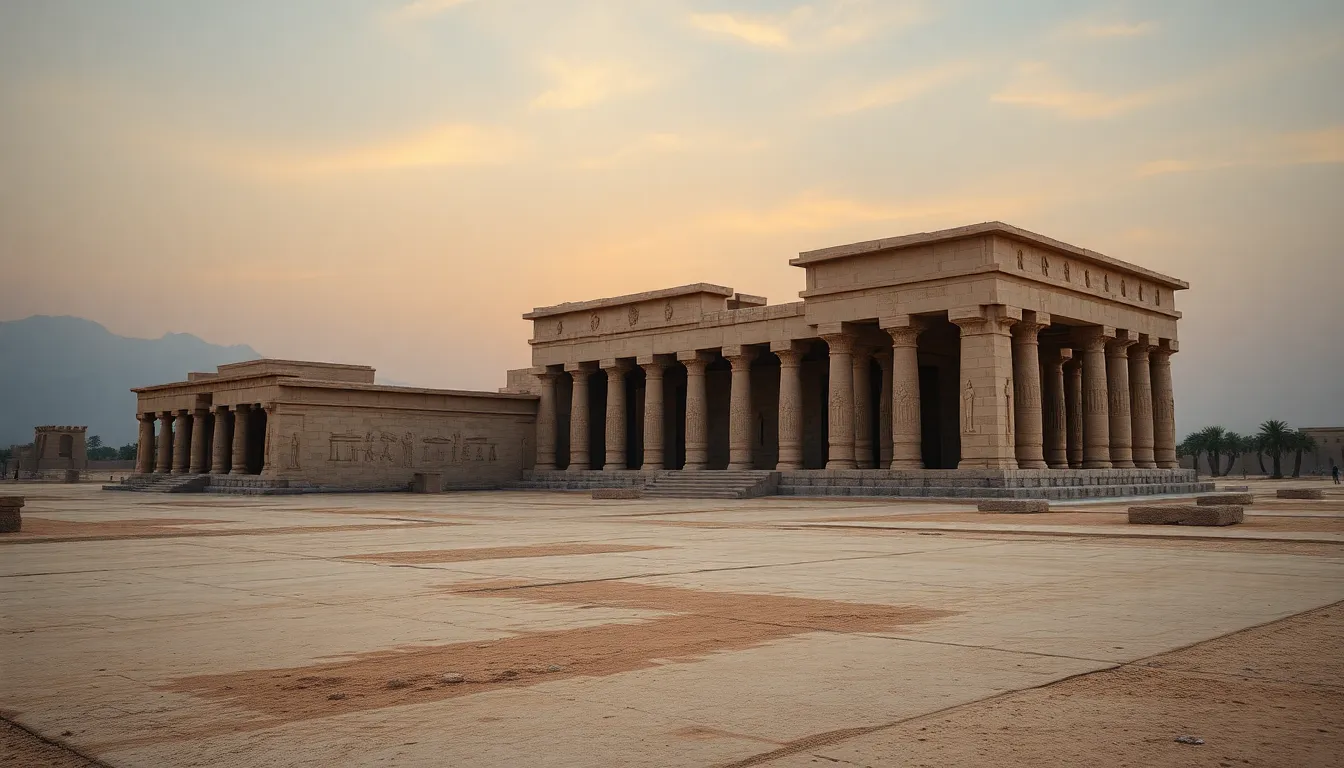Sacred Sites: The Most Important Temples of Ancient Egypt
I. Introduction
Ancient Egyptian religion was a complex and fascinating system of beliefs that encompassed a myriad of gods, goddesses, and rituals. The significance of these beliefs permeated all aspects of daily life, informing everything from the governance of the state to the personal lives of individuals. Temples served as the epicenter of this religious activity, functioning not only as places of worship but also as cultural and economic hubs.
The purpose of this article is to explore some of the key temples of Ancient Egypt, examining their historical context, architectural grandeur, and the roles they played in the spiritual and social fabric of Egyptian civilization.
II. The Role of Temples in Ancient Egyptian Society
Temples in Ancient Egypt were far more than mere religious buildings; they were integral to the community’s social and economic life.
- Centers of Worship: Temples were places where the divine met humanity, and rituals were performed to honor the gods.
- Economic Hubs: Temples often controlled vast lands and resources, contributing significantly to the economy.
- Political Influence: The priesthood held considerable power, often advising Pharaohs and participating in governance.
III. The Great Temple of Karnak
The Great Temple of Karnak is one of the largest religious complexes in the world, dedicated primarily to the god Amun. Located near Luxor, it has a rich historical context dating back to the Middle Kingdom and continued to expand over centuries.
Architecturally, Karnak features a vast array of structures, including massive pylons, towering obelisks, and the famous Hypostyle Hall, which contains 134 gigantic columns.
Religious practices at Karnak were vibrant, with numerous festivals celebrated throughout the year, including the Opet Festival, which honored the fertility of the Nile and the rejuvenation of the god Amun.
IV. The Temple of Luxor
The Temple of Luxor, built primarily during the reign of Pharaoh Amenhotep III, is another critical site in Ancient Egypt. Its construction spanned several dynasties, reflecting a timeline that showcases the evolution of architectural styles and religious practices.
Artistic representations within the temple walls depict significant historical events and the Pharaoh’s divine connection, offering insights into the culture and society of the time.
The temple played a vital role in the Opet Festival, where the statue of Amun was transported from Karnak to Luxor, symbolizing the union of the god with the Pharaoh and revitalizing the fertility of the land.
V. The Temple of Hatshepsut at Deir el-Bahari
The Temple of Hatshepsut, located in the cliffs of Deir el-Bahari, is known for its unique architectural design, which harmonizes with the surrounding landscape. Built during the reign of the female Pharaoh Hatshepsut, it serves as a testament to her power and divine association.
Hatshepsut is often depicted in the temple’s reliefs as a male Pharaoh, emphasizing her connection to divine authority. This temple was also integral to her funerary practices, showcasing the interplay between mortality and the divine.
VI. The Temple of Philae
Situated on an island in Lake Nasser, the Temple of Philae is dedicated to the goddess Isis. Its historical significance is immense, as it was one of the last bastions of Ancient Egyptian religion, continuing to be a site of worship until the rise of Christianity.
The myths associated with Isis, including her role in the resurrection of Osiris, made this temple a pilgrimage site for those seeking healing and favor from the goddess.
Efforts to preserve the temple have been significant, particularly following the construction of the Aswan High Dam. Today, it remains a symbol of Ancient Egyptian heritage and tourism.
VII. Other Notable Temples
In addition to the major temples discussed, several other notable sites played critical roles in regional worship:
- The Temple of Edfu: Dedicated to Horus, this well-preserved temple is renowned for its monumental architecture and detailed inscriptions.
- The Temple of Kom Ombo: Dedicated to the crocodile god Sobek and the falcon god Horus, this unique temple features a double structure, reflecting its dual dedication.
- Lesser-Known Temples: Numerous smaller temples scattered throughout Egypt contributed to local worship and community identity, each with its own unique stories and deities.
VIII. Conclusion
The sacred sites of Ancient Egypt, particularly its temples, were pivotal in shaping the culture and society of the time. They were not only centers of worship but also played vital economic, political, and social roles.
The legacy of these temples continues to resonate in contemporary culture, inspiring awe and fascination with Ancient Egyptian civilization. Their preservation and study encourage us to explore the rich tapestry of Ancient Egyptian heritage further.
As we delve deeper into the archaeological and historical context of these sacred sites, we uncover the profound ways in which they influenced the lives of the ancient Egyptians and continue to captivate our imagination today.




